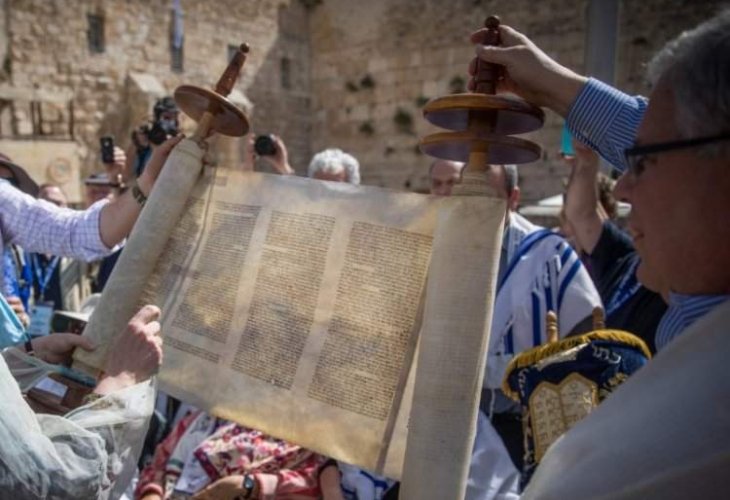Facts in Judaism
Reform Judaism and the Battle for Recognition in Israel: A Deep Dive into Beliefs, History, and Controversy
The Israeli Supreme Court's recognition of Reform conversions has ignited debate—here's what Reform Judaism stands for and why its legitimacy is fiercely contested.
 (Photo: Yonatan Sindel/Flash90)
(Photo: Yonatan Sindel/Flash90)A Landmark Ruling Sparks Debate in Israel
A recent Supreme Court ruling in Israel has reignited a sensitive and deeply divisive issue: the recognition of Reform conversions. The decision has prompted many to revisit long-standing questions about the Reform movement, its beliefs, and the controversy surrounding its status within Judaism. Who are the Reform Jews, and why is their approach so contentious?
Origins and Philosophy of Reform Judaism
The Reform movement originated in 19th-century Germany, aiming to modernize Jewish practice and belief in light of Enlightenment ideals and societal integration. This movement sought to align Jewish life with the modern world, particularly Christian society, through significant alterations to traditional Jewish laws and customs.
Unlike Orthodox Judaism, Reform Judaism does not recognize the binding authority of Halakha (Jewish law). Instead, it treats Jewish law as an inspirational, rather than obligatory, framework. Views and practices vary within the movement, but common to all is a strong emphasis on individual autonomy in religious decision-making.
Key Reforms in Belief and Practice
Reform Judaism introduced sweeping changes, such as driving on Shabbat, appointing female rabbis, and eliminating gender segregation in synagogues. Ethical commandments between individuals are emphasized over ritual observance. Women may lead prayer services, read from the Torah, wear prayer shawls, and receive rabbinical ordination.
Traditional Jewish liturgy was also dramatically altered by the Reform movement. References to the coming of the Messiah, resurrection of the dead, rebuilding of the Temple, and returning to Zion were removed from prayer books. In some cases, Jewish fast days were abolished (except Yom Kippur), and poetic passages were replaced with modern songs. Services included local languages and often featured organs and mixed-gender choirs.
Notably, the 'Aleinu' prayer was changed from "He has not made us like the nations of other lands" to "He revealed His will to our forebearers." Reform Jews also abandoned many laws of ritual purity, kosher, and traditional dress and prayer practices. Some communities held services on Sundays, mirroring Christian customs.
Conversion and Interfaith Marriage
The Reform approach to conversion is notably lenient. According to the Israeli Reform community’s website, converts are not required to adopt Jewish law. Rather, they are encouraged to develop a meaningful connection with Jewish culture and tradition in a way that resonates personally.
This openness extends to interfaith marriage, which is widely accepted in Reform Judaism. Demographic data from the United States reveals the impact: the Jewish population has decreased by 50% since 1950. Intermarriage rates rose from 17% in 1970 to 58% today. Among those identifying as "Jews without religion," 79% are married to non-Jews, and 37% of such families do not raise their children as Jews.
Some Reform congregations even host Christian ministers for sermons or allow rabbis to preach in churches. As one Reform rabbi in Cleveland remarked, "The only difference between us and the Christian churches across Euclid Avenue is the avenue itself, nothing more."
Questionable Membership Figures
The Reform movement claims to have 1.5 million members worldwide, but this figure has remained static for over two decades, despite significant demographic decline. Questions remain about who is counted (for example, non-Jewish spouses are often included in community statistics). In a striking example, New York’s oldest Reform temple failed to find a single Jewish grandchild of its founders during its centennial celebrations.
The Controversy in Israel
In Israel, Reform Judaism remains a minority struggling for recognition. The movement has made efforts to integrate into the education system and gain representation at the Western Wall. These moves are met with sharp resistance, particularly from the Ultra-Orthodox community which views Reform Judaism as a foreign faith.
Critics argue that the Reform movement’s actions, such as altering prayers, removing references to Jerusalem and Zion, and challenging religious tradition, disqualify it from being considered a legitimate branch of Judaism. They claim that Reform leaders do not seek access to the Western Wall for prayer, but rather to provoke recognition through media and politics.
The movement's critics ask: Can a movement that erased Jerusalem from its prayer book now claim spiritual attachment to its stones?
A Foreign Religion?
For its staunchest detractors, Reform Judaism is viewed not as a branch of Judaism but as an entirely different religion that borrows Jewish symbols. They argue that calling Reform Judaism "Judaism" is akin to labeling a dog a cat simply because it tries to meow.
Stark Statistics and Beliefs
According to research conducted by Manof:
53% of Reform Jews intermarry
40% do not believe Israel’s destruction would be tragic
40% are not halakhically Jewish
20% of Reform rabbis do not believe in God
59% work on Yom Kippur
80% did not hold Bar Mitzvahs for their children
These figures underscore the philosophical and theological divide between the Reform movement and traditional Jewish communities.
Conclusion
The Supreme Court's ruling has laid bare a fundamental clash of values within Israeli society. At its core lies a question that extends beyond legal definitions: What is Judaism, and who gets to define it? For many, the Reform movement’s philosophy and practices mark a clear departure from Jewish tradition. Whether Israel will ultimately recognize this form of Judaism is not only a political matter but also a question of national identity, continuity, and belief.

